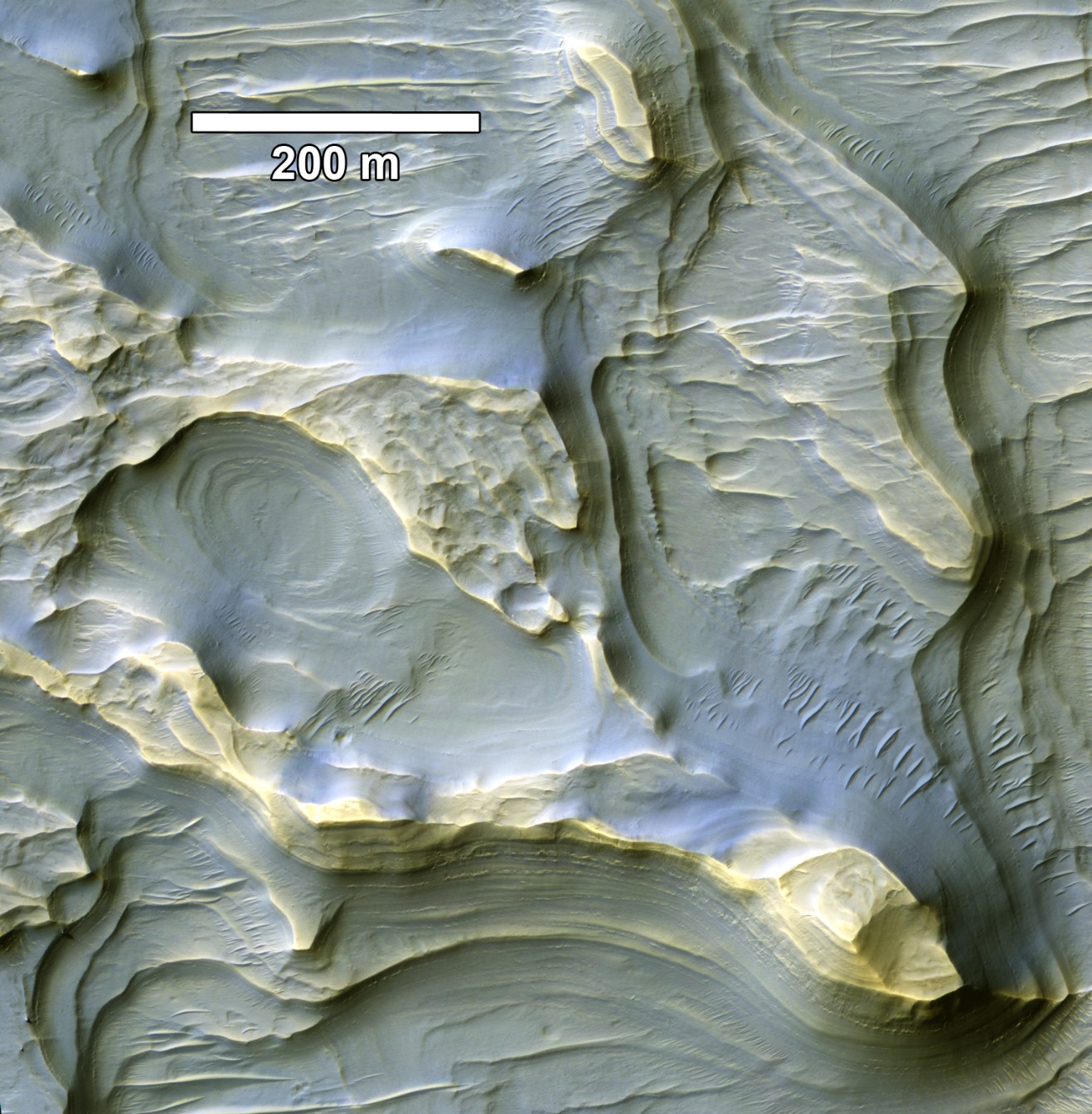Sedimentology and formative climatic environment of alluvial fans in Saheki crater, Mars
Role: PhD student (dissertation chapter)
Team: A.D. Howard, D.E.J. Hobley, J.M. Moore, W.E. Dietrich, R.M.E. Williams, D.M. Burr, J.A. Grant, S.A. Wilson, Y. Matsubara
Funding: NASA GSRP

The alluvial fans in Saheki Crater on Mars provide the most detailed record of fan formation and evolution yet discovered. We showed that these fans were built by a series of small, short-lived water flows that transported sand and gravel in channels, along with mud-rich overflows that spread finer sediments across the surface. Occasional shifts in the channels spread sediment across the entire fan.
Comparisons with alluvial fans in Chile’s Atacama Desert suggest similar processes, where water flows deposit sediment, and wind erosion leaves channels raised above the surrounding terrain. The water that shaped Saheki’s fans likely came from snowmelt on the crater rim during periods of favorable climate conditions on Mars. These fans were likely formed by hundreds of individual flow events over time.
